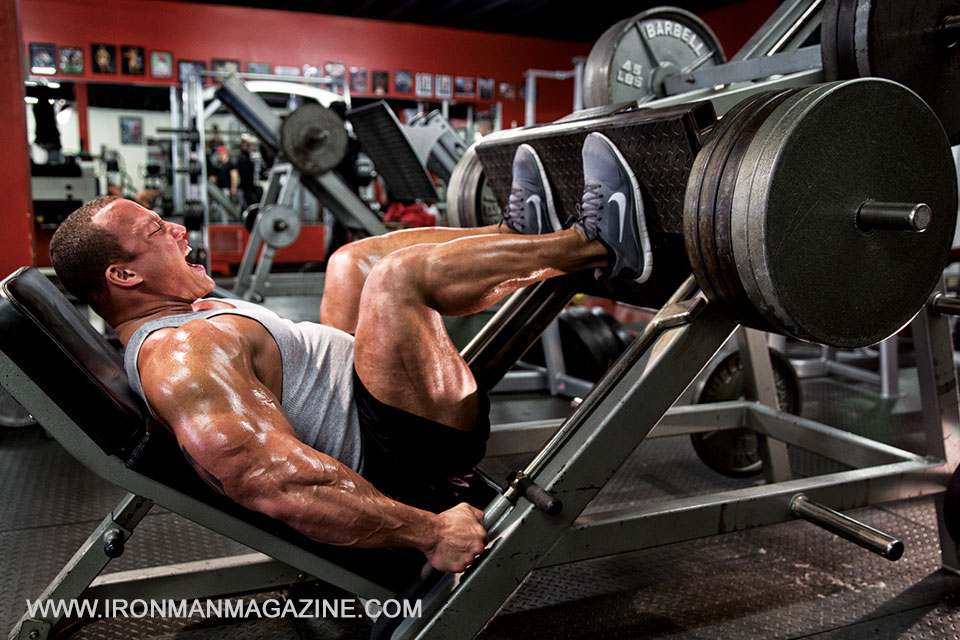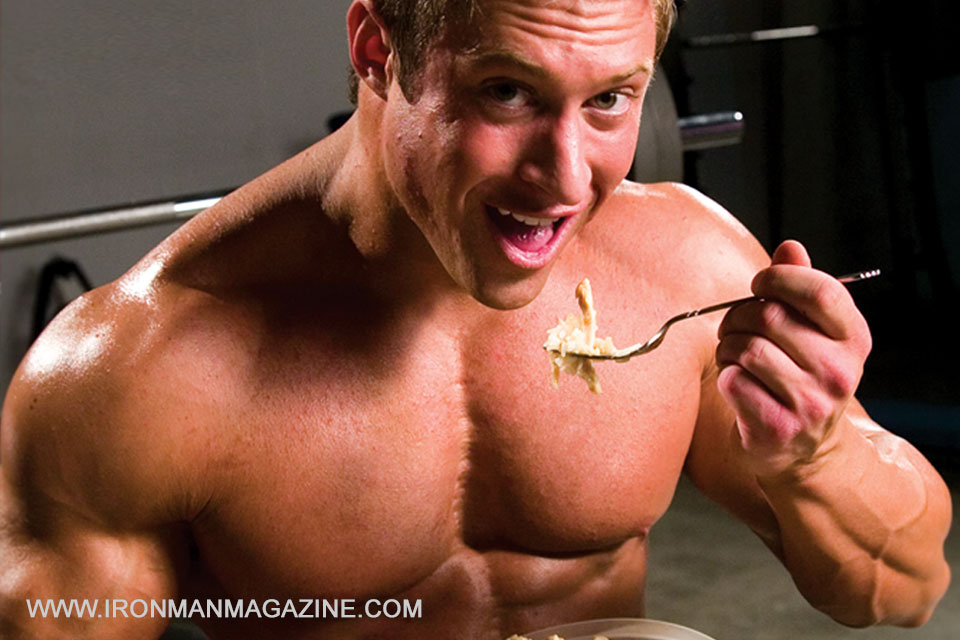


None of the advanced training techniques that I’ve shared with you in the past few columns are easy. Some are downright grueling. Last month I discussed barbell complexes, one of the most demanding workouts you can do but also one of the most effective at tapping into the lactic energy system and maximizing its potential for helping you burn fat and spur growth simultaneously.
This month’s technique also exploits that system—but using different means. It’s called peripheral heart action, or PHA, training. You may have heard it referred to as “death circuits,” and that description is pretty accurate. This is not a beginner’s method by any means. Like barbell complexes, PHA is for trainees who are at the point where they need to make some pretty difficult demands on their bodies in order to keep getting results. It’s another workout that people tend to hate—but only for the few minutes it takes them to do it. If you’re ready to see serious fat-loss results, you need to push through this one.
What Is PHA Training?
Peripheral heart action training has been around for decades. Dr. Arthur Steinhaus introduced it back in the ’40s, and in the ’60s bodybuilding expert and Mr. America winner Bob Gajda made it popular in the United States and Canada. Serious bodybuilders have been using it for decades, but it’s not something you see every day in the neighborhood gym.
The goal of PHA training is to use constant compound movements to force the heart to pump blood to the extremities. Obviously, it has good implications for both fat burning and cardio health, but it’s not that simple. If it were, we’d just call it circuit training.
Instead, PHA combines fairly heavy loads and very short rest periods, alternating upper- and lower-body exercises in several (usually four to six) repeated circuits. That puts a huge demand on your heart, which has to work continuously harder to get enough blood volume to your arms and legs.
Why Is Peripheral Heart Action So Effective?
The combination accomplishes several things at once. Because of the fairly high load (50 to 70 percent of one-rep max is fairly standard), the rest period after each set and the fact that you alternate upper-body moves with lower-body moves, you’re able to complete a very demanding mechanical workload. That brings a very serious lactic acid buildup, which in turn stimulates greater release of human growth hormone, and that promotes greater fatty acid burning.
In other words, peripheral heart action training delivers incredible metabolic benefits while still growing your strength.
This is one of the best ways I know to get completely shredded for a competition or photo shoot, and at the same time it’s not straight cardio or even straight high-intensity interval cardio. You’re still moving a respectable amount of weight during the workout.
How Is It Done?
There are as many ways to do peripheral heart action training as there are people doing it. It’s an incredibly flexible method. The only keys are to use a heavy enough load, to alternate upper- and lower-body movements, to stay in motion as much as possible and to rest as little as possible.
You can use anywhere from four to eight different exercises, and you can up the intensity by increasing the reps, increasing the number of exercises, adding more weight or adding more total circuits.
One of the virtues of peripheral heart action training is that it may be incredibly demanding to do, but it’s very easy to keep it simple.
For instance, you may do something like this:
A1) Standing barbell good mornings, 8-10 reps
Rest 60 seconds
A2) Wide-grip pullups, 8-10 reps
Rest 60 seconds
A3) Leg presses, 20-25 reps
Rest 60 seconds
A4) Barbell military presses, 10-12 reps
Rest 60 seconds
Repeat three more times for a total of four circuits.
One thing I do strongly suggest is that you run through a workout once with a fairly light load before you decide how much weight to use and how many total sets you’re going to do. They don’t call these “death circuits” for nothing. If you’re doing it correctly, this workout will convince you that you’re dying.
Also, this is a great method to use during a cutting phase, during a planned deloading week or once a week or so as a replacement for regular cardio. This is not a long-term day in, day out training method. It’s not interchangeable with protocols that are focused more on hypertrophy and less on fat burning.
A Few More Points on PHA Training
While these workouts are fairly simple and straightforward to design and tweak, they’re not simple to do. It’s really helpful to get input from someone who’s used this method successfully. It’s also a really good idea to have a partner for this workout. Believe me, you’re going to want to quit in the middle. Having someone pushing you onward can make a huge difference in the outcome.
I would encourage you to check out our 1-on-1 High Level Physique & Performance Coaching program at www
.VinceDelMonteFitness.com. We use peripheral heart action and about 35 other advanced training techniques with our clients, constantly changing the variables and upping the ante so that plateaus are a nonissue and the results are dead on, week after week.
It’s not a program that I recommend for guys who aren’t yet at an intermediate level of lifting—with at least a year or so under their belts—although we’re certainly open to talking to you about your specific situation. Generally, if you’re willing to learn, willing to implement new methods and put in a lot of hard work, the results are dramatic.
Keep lifting and living large.
Editor’s note: Vince Del Monte packed on an amazing 40 pounds of muscle in 24 weeks. He’s known as “the Skinny Guy Savior” and offers a number of courses to help you go from twig to big, including No Nonsense Muscle Building. For more information or to sign up for his free-tips newsletter, visit www.VinceDelMonteFitness.com. IM





















You must be logged in to post a comment Login